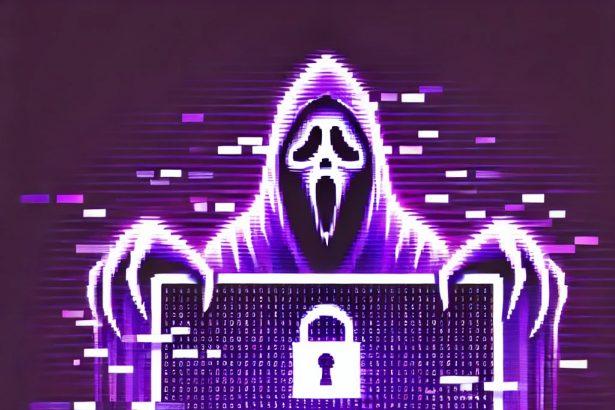BlackFl is a recent ransomware strain that targets organizations and individuals by encrypting files and attempting to extort victims through threats of data leakage. This malware appends encrypted files and leaves a ransom note indicating stolen backups and corporate data—blackmailing victims to contact via Telegram or email for a tailored ransom demand, with consequences if contact is delayed.
Threat Overview
| Feature | Details |
|---|---|
| Threat type | Ransomware, Crypto-Virus, Double extortion |
| Encrypted file extension | Varies (original names changed; no common suffix) |
| Ransom note file name(s) | Typically includes a note pointing to stolen & encrypted data |
| Associated emails | yamag@onionmail.org, yamag@tuta.io |
| Detection names | Generic crypto-virus detections from major AV engines |
| Symptoms of infection | Inaccessible files, ransom notes in folders, wallpaper change |
| Damage & distribution methods | File encryption, data theft, extortion via email, Telegram contact, potential data leaks |
| Danger level | High — threatens data exposure & encryption |
| Removal tool | SpyHunter (download here) |
Detailed Evaluation
How I Got Infected
BlackFl commonly arrives through phishing or malicious email attachments. Once executed, it encrypts files and exfiltrates sensitive data such as backups and documents, storing them on remote servers prior to encryption.
What It Does
- Encryption: Locks files, rendering them unusable.
- Double extortion: Demands ransom while threatening to leak data on dark web platforms.
- Blackmail: Ransom amount tailored to victim’s financial situation; non-compliance escalates threats.
Ransom Note Content
Victims report ransom notes stating that backups were encrypted, data stolen—and that the ransom amount is customized. Communication channels include two email addresses and Telegram. The attackers emphasize urgency, warning that delayed response worsens consequences.
Should You Be Worried?
Absolutely. BlackFl doesn’t just lock files—it steals data and threatens to publish it. Without backups, victims face both data loss and privacy exposures. Even paying doesn’t guarantee data recovery and may encourage further criminal activity.
Ransom Note (Excerpt)
“Your files and backups have been encrypted and stolen. Sensitive corporate data has been exfiltrated. We will set the ransom based on your financial situation. Do not ignore this: if we don’t reach an agreement, we will worsen the outcome. Contact us at yamag@onionmail.org or yamag@tuta.io or on Telegram @gotchadec.”
Manual Ransomware Removal Guide
Warning: Manual removal is complex and risky. If not done correctly, it can lead to data loss or incomplete removal of ransomware. Only follow this method if you are an advanced user. If unsure, proceed with Method 2 (SpyHunter Removal Guide).
Step 1: Disconnect from the Internet
- Unplug your Ethernet cable or disconnect Wi-Fi immediately to prevent further communication with the ransomware’s command and control (C2) servers.
Step 2: Boot into Safe Mode
For Windows Users:
- For Windows 10, 11:
- Press Windows + R, type
msconfig, and hit Enter. - Go to the Boot tab.
- Check Safe boot and select Network.
- Click Apply and OK, then restart your PC.
- Press Windows + R, type
- For Windows 7, 8:
- Restart your PC and press F8 repeatedly before Windows loads.
- Select Safe Mode with Networking and press Enter.
For Mac Users:
- Restart your Mac and immediately press and hold the Shift key.
- Release the key once you see the Apple logo.
- Your Mac will start in Safe Mode.
Step 3: Locate and Terminate Malicious Processes
For Windows Users:
- Press Ctrl + Shift + Esc to open Task Manager.
- Look for suspicious processes (e.g., unknown names, high CPU usage, or random letters).
- Right-click on the process and select End Task.
For Mac Users:
- Open Activity Monitor (Finder > Applications > Utilities > Activity Monitor).
- Look for unusual processes.
- Select the process and click Force Quit.
Step 4: Delete Malicious Files
For Windows Users:
- Press Windows + R, type
%temp%, and hit Enter. - Delete all files in the Temp folder.
- Navigate to:
C:\Users\[Your Username]\AppData\RoamingC:\Users\[Your Username]\AppData\LocalC:\Windows\System32
- Look for suspicious files related to the ransomware (random file names, recently modified) and delete them.
For Mac Users:
- Open Finder and go to Go > Go to Folder.
- Type
~/Library/Application Supportand delete suspicious folders. - Navigate to
~/Library/LaunchAgentsand remove unknown.plistfiles.
Step 5: Remove Ransomware from Registry or System Settings
For Windows Users:
Warning: Incorrect changes in the Registry Editor can damage your system. Proceed with caution.
- Press Windows + R, type
regedit, and hit Enter. - Navigate to:
HKEY_CURRENT_USER\SoftwareHKEY_LOCAL_MACHINE\Software
- Look for unfamiliar folders with random characters or ransomware-related names.
- Right-click and select Delete.
For Mac Users:
- Go to System Preferences > Users & Groups.
- Click on Login Items and remove any suspicious startup items.
- Navigate to
~/Library/Preferencesand remove malicious.plistfiles.
Step 6: Restore System Using System Restore (Windows) or Time Machine (Mac)
For Windows Users:
- Press Windows + R, type
rstrui, and hit Enter. - Click Next, choose a restore point before the infection, and follow the prompts to restore your system.
For Mac Users:
- Restart your Mac and hold Command + R to enter macOS Utilities.
- Select Restore from Time Machine Backup.
- Choose a backup prior to the ransomware infection and restore your system.
Step 7: Use a Decryption Tool (If Available)
- Visit No More Ransom (www.nomoreransom.org) and check if a decryption tool is available for your ransomware variant.
Step 8: Recover Files Using Backup
- If you have backups on an external drive or cloud storage, restore your files.
Automatic Ransomware Removal Using SpyHunter
If manual removal seems too risky or complicated, using a reliable anti-malware tool like SpyHunter is the best alternative.
Step 1: Download SpyHunter
Download SpyHunter from the official link: Download SpyHunter
Or follow the official installation instructions here:
SpyHunter Download Instructions
Step 2: Install SpyHunter
- Open the downloaded file (
SpyHunter-Installer.exe). - Follow the on-screen prompts to install the program.
- Once installed, launch SpyHunter.
Step 3: Perform a Full System Scan
- Click on Start Scan Now.
- SpyHunter will scan for ransomware and other malware.
- Wait for the scan to complete.
Step 4: Remove Detected Threats
- After the scan, SpyHunter will list all detected threats.
- Click Fix Threats to remove the ransomware.
Step 5: Use SpyHunter’s Malware HelpDesk (If Needed)
If you are dealing with a stubborn ransomware variant, SpyHunter’s Malware HelpDesk provides custom fixes to remove advanced threats.
Step 6: Restore Your Files
If your files are encrypted:
- Try No More Ransom (www.nomoreransom.org) for decryption tools.
- Restore from cloud storage or external backups.
Preventing Future Ransomware Attacks
- Keep backups on an external hard drive or cloud storage.
- Use SpyHunter to detect threats before they infect your system.
- Enable Windows Defender or a trusted antivirus program.
- Avoid suspicious emails, attachments, and links.
- Update Windows, macOS & software regularly.
Conclusion
BlackFl is a dangerous, double-extortion ransomware that not only encrypts data but also threatens data exposure. Its tailored ransom demands and aggressive escalation strategies make it a serious threat. Victims should act quickly: isolate infected systems, restore from backups, and use SpyHunter to remove the malware—though recovery of encrypted or stolen data relies heavily on backups, not decryption.




